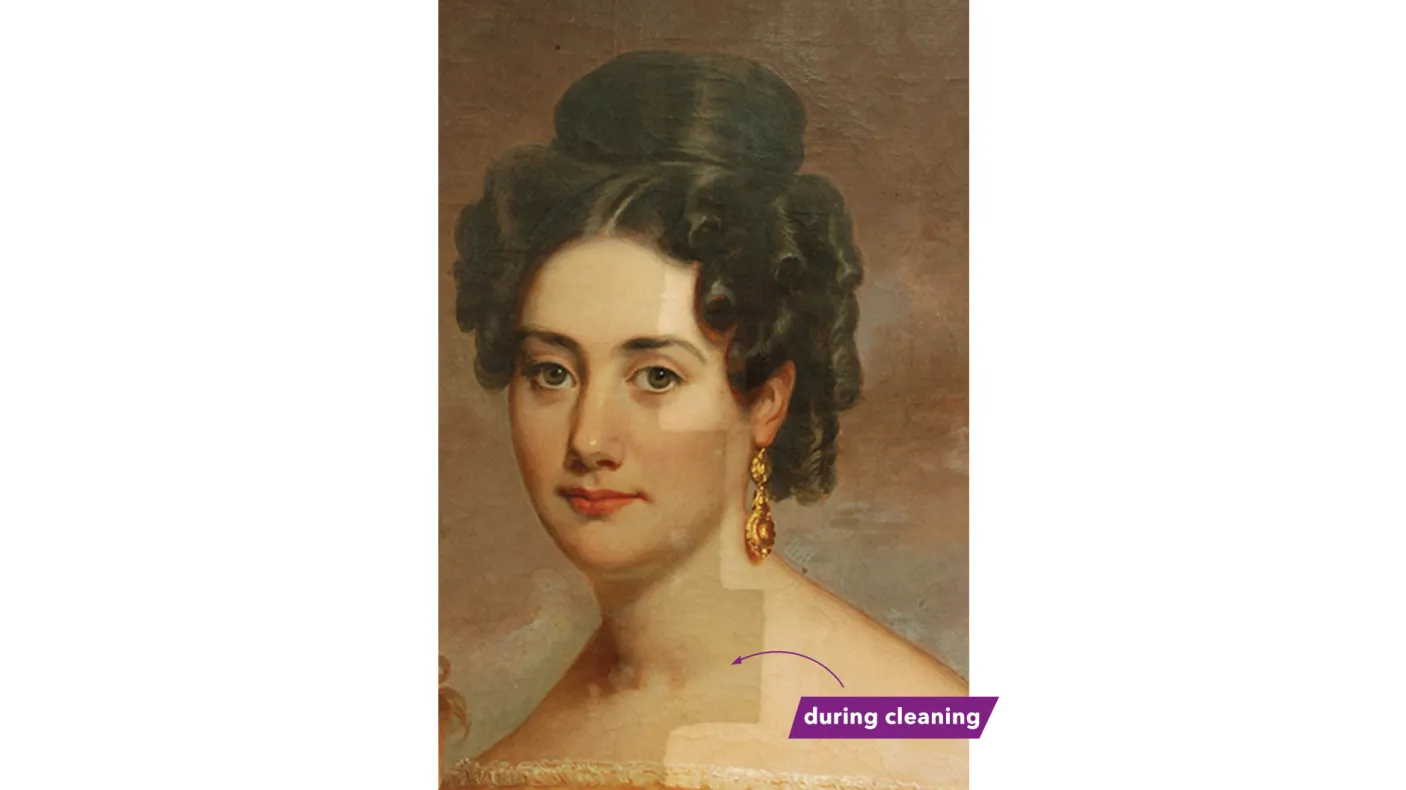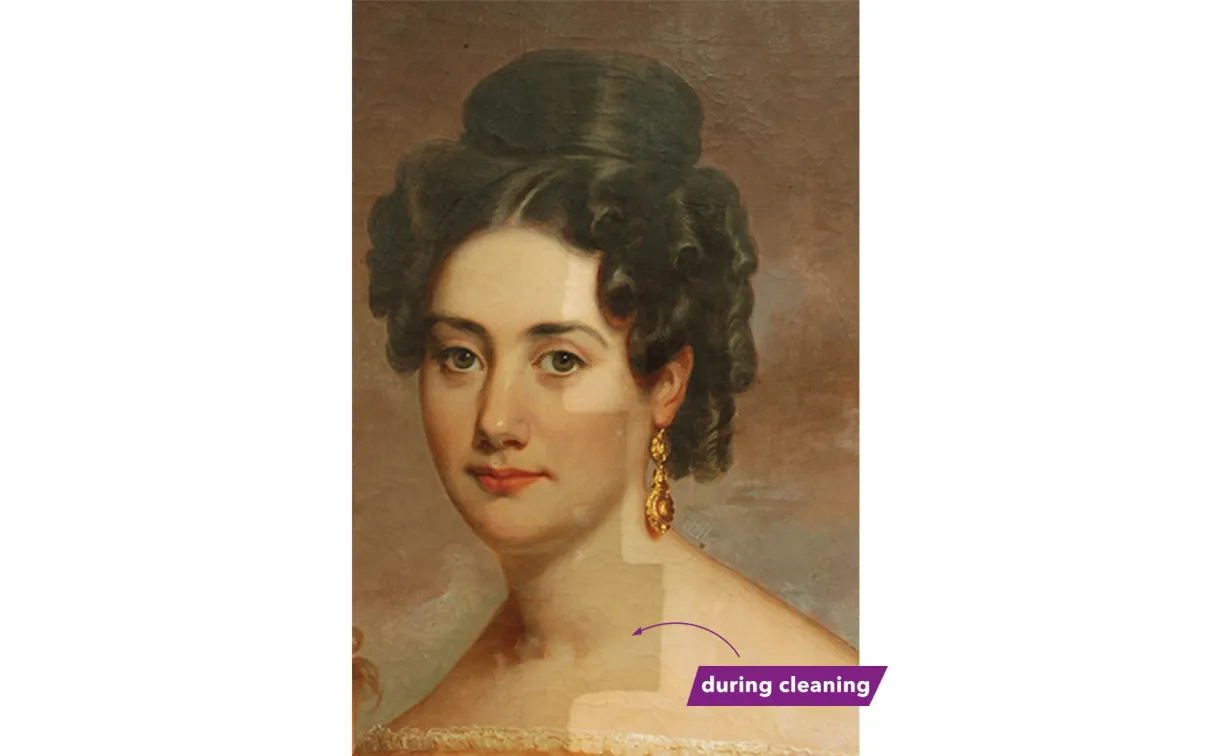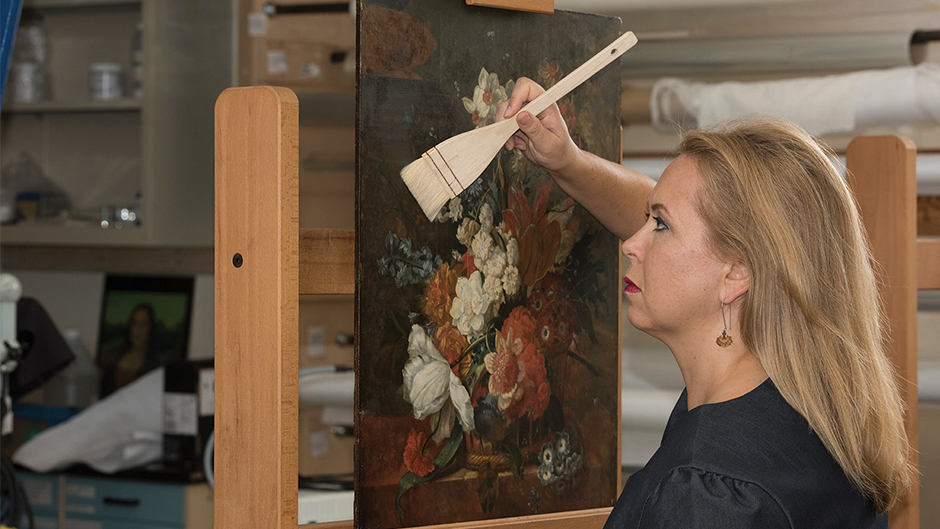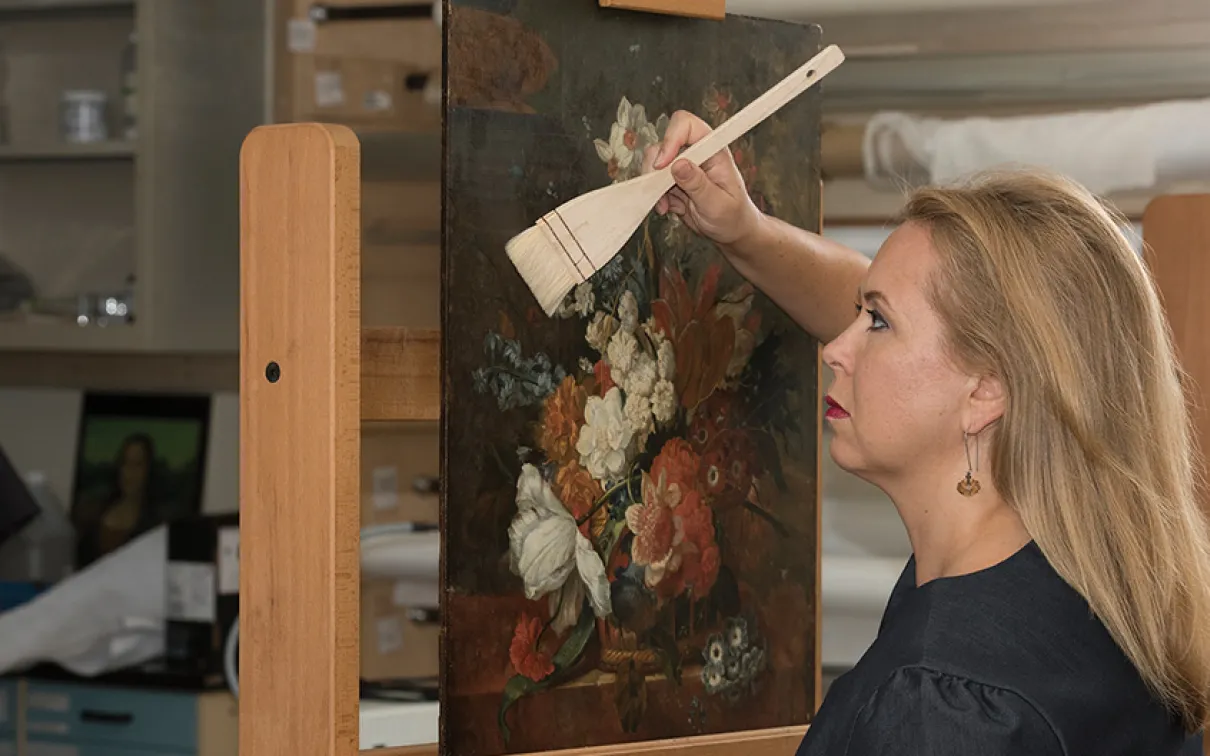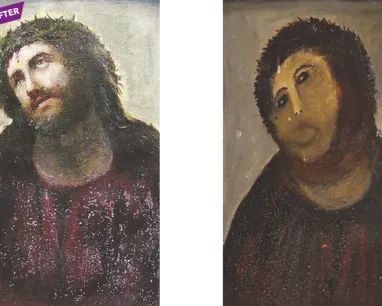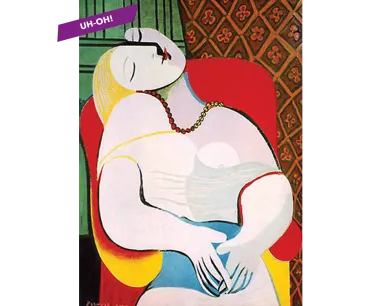Slash Marks and Bullet Holes
Heidi Sobol on conserving and treating damaged artwork.
Published
Categories
Author
What is the most difficult job that you’ve undertaken?
What is the most difficult job that you’ve undertaken?
All conservation treatments have a degree of technical difficulty, but the most difficult ones tend to be projects that have a personal component. I’ve conserved paintings with bullet holes (due to an angry neighbour), paintings with slash marks (due to an angry paramour), and several paintings that endured a house fire (and subsequent hosing from the fire department). A little while ago I conserved a pair of small portraits for a woman who left her homeland with one suitcase. She managed to make room for the artworks, no doubt having to jettison other items to make room. The works were severely damaged during transit and their restoration was of immeasurable importance to the woman ... so the treatment was much more than mending tears to create a stable artwork! It was an emotional project for both of us.
How did you get interested in conservation?
My father’s friend’s son hit a slapshot into his open garage and the puck went through a large oil-on-canvas painting stored at the back. My father brought me along to the conservator’s studio, mainly to help manoeuvre the large canvas out of the back of our van. The conservator’s studio was fascinating: easels, large windows, and a wealth of pigments, solvents, and brushes. I wanted to pursue a career in the arts, but the mix of art and science was a revelation. She also had a killer pair of heels on, so that pretty much convinced me that a career in art conservation was the way to go.
Any tips for people who have artwork on display at home?
Any tips for people who have artwork on display at home?
A popular saying in conservation is “Better is the enemy of good.” Many times, well-intentioned art owners try to clean or restore their artworks, only to be left with an artwork that is in more unstable condition than before. Windex is great for glass, but not so great for eighteenth-century landscape paintings. Professional, accredited conservators are the best resource for ensuring your art is in a stable environment; they can do onsite assessments as well as major restoration campaigns if necessary. Above all, keep artwork in areas of the house you also enjoy, like the main floor or storied living areas. Basements and attics are often places with too high or too low humidity, which can be problematic for artworks and artifacts. Avoid placing artwork above heating or cooling vents, or by uncovered windows that allow streaming sunlight to cast onto the artwork.This can lead to fading at an accelerated rate.
What are you working on now?
We are preparing for rotations in our permanent galleries, so currently we have European paintings on the easels. We just finished a major exhibition, so we must switch gears from acrylic cleansing strategies to aged nineteenth-century varnishes. Every day is a new challenge, which makes this career very fulfilling.
The work demands full attention—no distractions, no texting, and a methodical approach.
What do you love most about your job?
What do you love most about your job?
I absolutely love the solitude during the treatment of a painting. The work demands full attention—no distractions, no texting, and a methodical approach. We all experience these moments, though infrequently, when pulling weeds, during a long run, or when meditating. Once that solitude is secured, I begin to have a “conversation” with the painting. This quiet conversation is almost always based on the fact that the painting is in need of help. Sometimes the painting clearly tells me what it needs, and other times I have to dig to find the issues. All in all, I feel privileged to spend a brief time with the painting—one that existed well before me and (hopefully) will exist long after me.
Has there ever been a time during your career when you went “Oops...”?
I’ve never made a mistake—not true! Pretty much all of my hard-and-fast rules were born out of mini-failures. I had a full panic attack when a small humidity treatment (adding moisture to a small tear) resulted in blanching. Blanching is a phenomenon that can drive water into a painting, causing the surface to look white and cloudy. As it turns out, the blanching was just in the varnish layer and it could be quickly reversed.
Good Intentions Gone Wrong
Heidi Sobol
Heidi Sobol is Senior Paintings Conservator at the ROM.
Sheeza Sarfraz is Manager of Publishing at the ROM.
